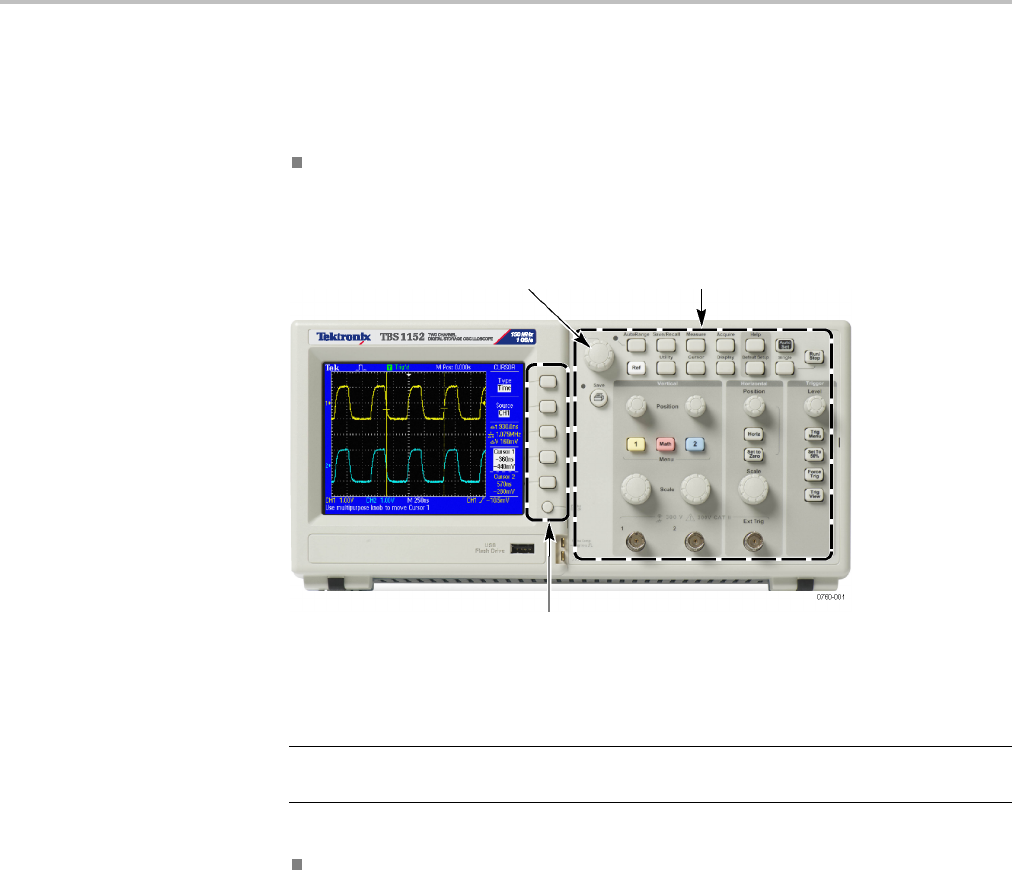User manual
Table Of Contents
- toc
- General safety summary
- Compliance Information
- Preface
- Getting Started
- Operating Basics
- Understanding Oscilloscope Functions
- Application Examples
- Taking Simple Measurements
- Using Autorange to Examine a Series of Test Points
- Taking Cursor Measurements
- Analyzing Signal Detail
- Capturing a Single-Shot Signal
- Measuring Propagation Delay
- Triggering on a Specific Pulse Width
- Triggering on a Video Signal
- Analyzing a Differential Communication Signal
- Viewing Impedance Changes in a Network
- Data Logging
- Limit Testing
- Math FFT
- USB Flash Drive and Device Ports
- USB Flash Drive Port
- File Management Conventions
- Saving and Recalling Files With a USB Flash Drive
- Using the Save Function of the Print Front Panel Button
- USB Device Port
- Installing the PC Communications Software on a PC
- Connecting to a PC
- Connecting to a GPIB System
- Command Entry
- Connecting to a Printer
- Printing a Screen Image
- Reference
- Appendix A: Specifications
- Appendix B: TPP0101 and TPP0201 Series 10X Passive Probes Inform
- Appendix C: Accessories
- Appendix D: Cleaning
- Appendix E: Default Setup
- Appendix F: Font Licenses

Preface
Conventions
This manual uses the following conventions:
Menu options appear with the first letter of each word in upper case. For
example: Peak Detect, Window Zone.
Multipurpose knob
Front-pane
l buttons and knob labels — First
letter of each word in upper case
\
\
Option
buttons — First letter of each word on screen is upper case
NOTE. Option buttons may also be called screen buttons, side-menu buttons,
bezel buttons, o r soft keys.
The ► delimiter separates a series of button pushes. For example, Utility ►
Options ► Set Date and Time means that you push the Utility front-panel
button, then push the Options option button, and then push the Set Date and
Tim
e option button. Multiple pushes of an option button may be required
to select the desired option.
TBS1000 Series Oscilloscopes User Manual xv










